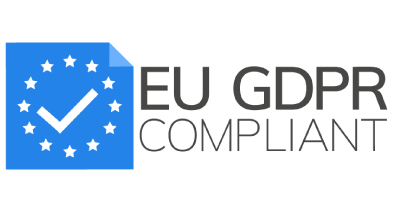Prior to the pandemic, most roles took place in the office. Remote or hybrid working was far less common. Yet since 2019, enforced home working has caused a significant shift in employee mobility.
It’s introduced a new way of working that’s not set to slow down; 90% of companies support some level of remote working today, and 57% expect global mobility to increase this year.
With this in mind, there’s no doubt that flexible working is the future and is essential to attract and retain the best employees. However, while many companies have now embraced a ‘work from anywhere’ model, most aren’t prepared for what comes next, especially when it comes to international employment tax and payroll challenges.
In this article, we focus on the payroll perspective of this new way of working. (For all other aspects of remote working, we strongly recommend seeking professional advice.)
Key considerations for a work-from-anywhere model
While many companies are now open to flexible working, working remotely in a different country may be new for some. This requires a new set of considerations.
For example, employees working in new states or countries may trigger certain employment law considerations, as well as payroll registration or employment tax withholding requirements.
Immigration and work permit requirements are also very important for both the employee and the organisation.
Ultimately, late discovery of non-compliance could lead to massive cost on time, money and efforts. Therefore, proactivity and being prepared for changes to payroll are key to good compliance.
How to manage compliance with global mobility
As the work from anywhere model continues to expand, given the potential risks, we strongly recommend that a “remote working” approval process is put in place to review all significant compliance issues with employee and business input. This means risk can be managed before a remote working case begins.
Corporate and HR policies will also need to be reviewed and updated to reflect this new consideration. Sometimes, the risk is so great, it might not be beneficial to have a remote worker in a certain location performing a certain task. It is best practice to document such a decision with the relevant policy, as well as compliance risk review results as a reference point.
Data visibility is another element worth planning before the launch of a large scale remote working programme. Relevant stakeholders (e.g.Human Resources and global mobility teams) will need to be well-informed regarding the employee’s working location, length of stay, and nature of work. They should also be well-advised about the tax implications on where shadow payroll operations may be required.
One of the key considerations of compliance is whether shadow payroll is required and if so, how to manage this process with efficiency.
What is shadow payroll?
A shadow payroll is a payroll that doesn’t physically pay the employee, rather it’s a mechanism that allows the employer to meet their local payroll tax payments and reporting obligations by replicating or “shadowing” the home payroll compensation reporting.
It affects employees working in a location that is different to his/her home employment location, e.g. International long- and short-term assignment workers, international business travel and international remote working arrangements.
Find out more: What is shadow payroll? (And when is it required)
This helps to ensure the employer is payroll compliant, but more importantly, managing payroll effectively is essential to retain top talent:
Employee knowledge - Employees are made aware of the payroll and tax implications of remote working and have good knowledge of what taxes are to be paid by themselves and, where agreed, what taxes are to be borne by the employer.
Employee expectation - All relevant parties are aware of the remote working policy, understand how the employee’s compensation package, especially the net pay is to be affected (if it is the case), and accept responsibility and accountability as stated in the policy.
Employee experience - With good knowledge and managed expectation, it is easier for you to deliver a good employee experience. To offer even more clarity, all understanding should be summarised in an agreement. If suitable, where a tax protection or equalisation policy is adopted, a good shadow payroll provider with clear and accurate payroll instructions can save employee time in auditing payslips, as well as the employer’s overheads in addressing numerous questions.
Key considerations for shadow payroll in a work-from-anywhere model
While increased employee flexibility and mobility feels largely positive, they can come with distinct shadow payroll challenges. We’ve split these considerations by employee and company to help you manage employee satisfaction and compliance.
Checklist: Key employee considerations
✅ Length of remote working and local connections - Consider whether an employee may become tax resident in the working country and the implications of that. For example, could they break their tax residency in the home location?✅ Personal income tax and social security - Will your employees trigger income tax and social security obligations across multiple countries that they work in? Are you, as the employer, now required to withhold and remit payroll taxes in both the home country and the remote working countries?
✅ Social security - Is a totalisation agreement in place? Will the company ensure correct compliance? Could this lead to double social security costs for both employer and employee? Remember that there are far less reciprocal agreements than tax treaties.
✅ Policy applicability - What policy applies to this remote worker? What is the policy guidance on the situation? Will a special policy be implemented specifically for remote workers? Is there anything not covered by the current policies to consider?
✅ Pension - Have you considered tax treatment for both employee and employer home country contributions in the new location?
✅ Job Roles - Is the employee able to carry on his/her role in the remote working country? A senior decision maker may trigger more compliance issues where a person with no such management responsibilities wouldn’t.
Checklist: Key company payroll considerations
- ✅ Tracking and documentation - Are you tracking employee whereabouts and workdays for tax and shadow payroll considerations? Is there a need to track the nature of work and tasks performed as well? How can you offer sufficient visibility to all stakeholders for this programme?
- ✅ Exception management - Is there a business case for an exception? Or any existing framework for this process? Make sure vendors are fully aware of the exception case and advice and carry out compliance work (such as shadow payroll) accordingly.
- ✅ Long term incentive - Is there an incentive scheme that requires apportionment for reporting and tax purposes in the host country?
- ✅ Local taxes or levies - Whose responsibility is this? What does the policy say? Bearing in mind that since the pandemic, remote working is most likely a personal choice and therefore employees will be responsible for their own taxes and costs, how do you make sure employees meet their obligations?
- ✅ Cost recharging - What costs will be recharged, especially those of the remote location entity, and how? Do you have a process to manage this?
- ✅ Implication to the employment entity and home country - Are there any reporting and compliance requirements for this population back home?
- ✅ Remote location entity - Do you have an entity in the remote working location that can manage any payroll implications? If required, is there an alternative solution?
In conclusion
Working from home affords a better work-life balance for most employees who choose to do so. Working from anywhere in the world pushes this to a new level. It allows employees to travel while working, continue their education, attend job-related workshops, or grow their families.
This is why a working-from-anywhere structure appeals to top talent.
For businesses, a working-from-anywhere approach breaks down geographical barriers and increases the talent pool. However, achieving this is not as easy as some employers might first think.
With work from anywhere, the location of employees, their activities, and their social security and taxation requirements will all take on greater emphasis. That’s why understanding the tax obligations and compliance requirements over the entire globally mobile workforce, as well as for the company itself, can quickly turn into a complex multi-dimensional project that requires expertise in many areas.
If managing shadow payroll and employment taxes is a concern for you, our advisors can help.
Learn more about shadow payroll management or book a consultation now.
.jpg)
-1.png)
.png)
.png)




